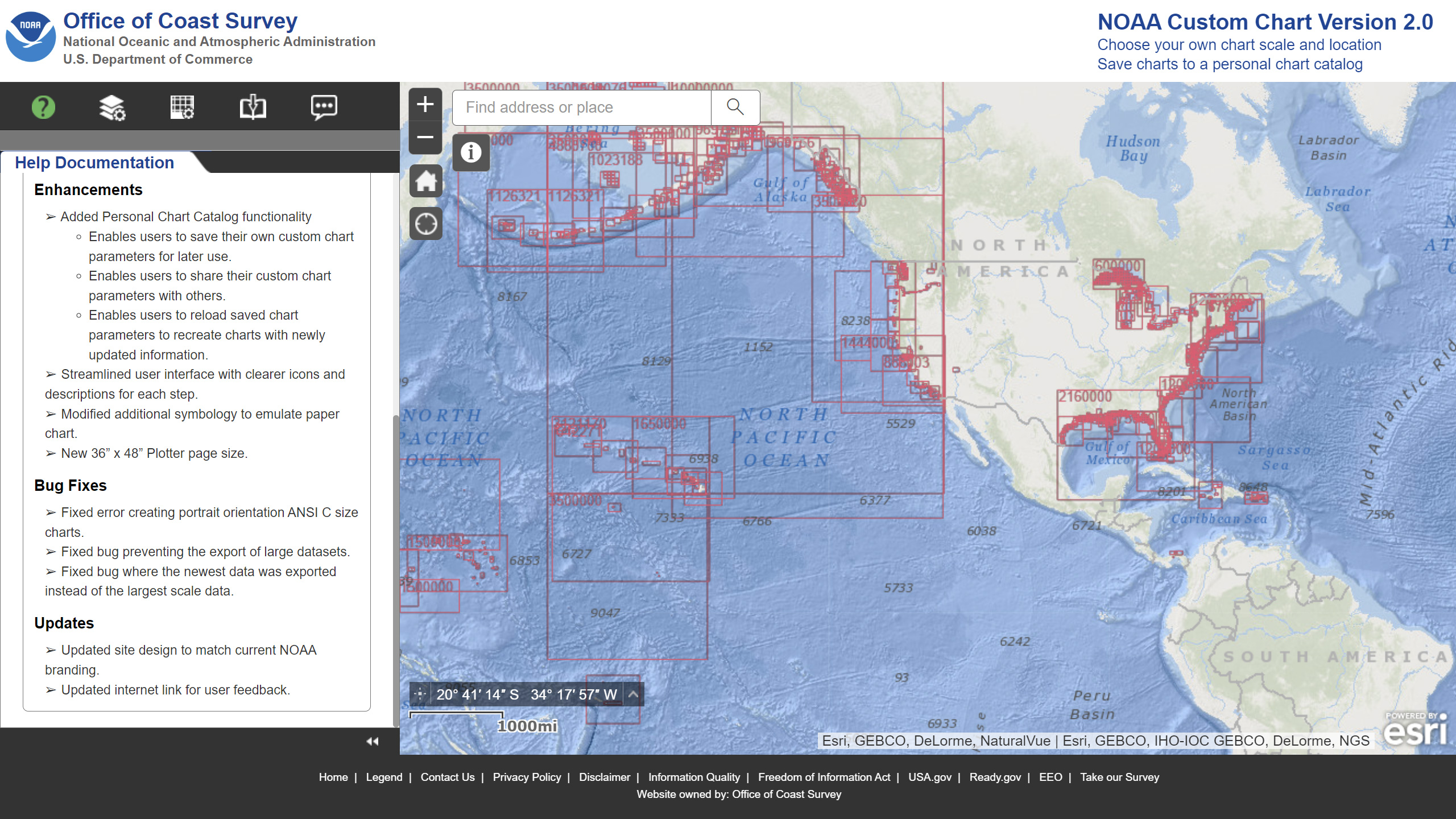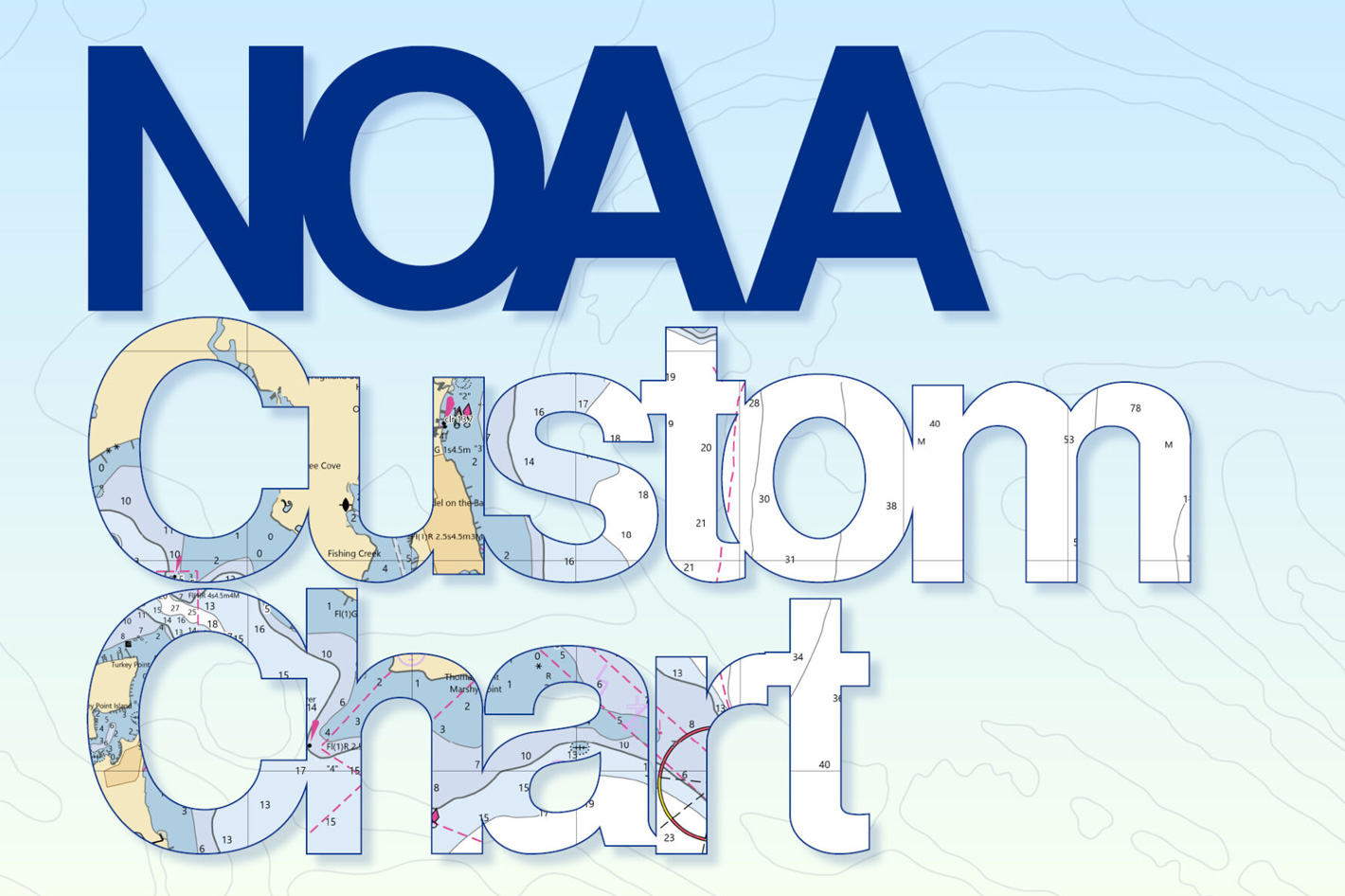Now available to the public, NOAA Custom Chart version 2.0 is a dynamic map application, which enables users to create their own paper and PDF nautical charts.
Derived from the official NOAA electronic navigational chart, NOAA’s premier nautical chart product, the Custom Chart is an online application that uses the latest official NOAA ENC data to create nautical charts with customized scale and extent, which can then be downloaded as PDF files. The data on the chart is presented in a manner similar to traditional paper nautical charts, showing soundings, buoys, beacons and other aids to navigation, compass roses and the like.
Responsible for the release of the NOAA Custom Chart version 2.0, NOAA’s Office of Coast Survey noted that the additional enhancements from the previous version include:
· A streamlined user interface that describes each setting.
· Further improvement of chart symbols.
· Additional page size options.
· The addition of more chart notes, particularly in areas where traditional paper charts have been canceled.
According to NOAA’s Office of Coast Survey , “the most noteworthy change is the addition of the Personal Chart Catalog functionality, which allows users to save their charts to an exported Chart Catalog file. Users can then recreate a chart or multiple charts repeatedly as NOAA releases ENC updates by uploading the file in a new session of the NOAA Custom Chart in their web browser.”
The Chart Catalog file now made available is small in size and can be emailed easily as an attachment, allowing users to share with print vendors or collaborate with others. NOAA is working on enhancing its Chart Updates website to allow users to upload the same Chart Catalog file and check for updates to their custom charts.”
NOAA looks forward to future enhancements, which include improved compass rose placement, enhanced text labels, and options for use of additional types of chart symbols.
Traditional paper and raster charts are still updated on a weekly basis with critical navigation changes that are released in the U.S. Coast Guard Local Notice to Mariners. However, other changes, such as data from new shoreline and bathymetric surveys, and other non-critical changes – which are routinely applied to the ENC – are no longer compiled onto traditional paper and raster charts, as NOAA will end production of its traditional paper nautical charts.
 NOAA is sunsetting its paper nautical charts
NOAA is sunsetting its paper nautical charts
In 2019, NOAA announced its Sunsetting of Raster Nautical Charts in the Federal Register. The raster sunset program will gradually end production and maintenance of NOAA traditional paper and raster nautical chart products. In 2021, NOAA started canceling its traditional nautical charts, a process that is expected to be completed by January 2025. At that time NOAA will end production of its traditional paper nautical charts, but will continue to provide users access to paper charts created directly from ENC data via the NOAA Custom Chart application, which has now reached version 2.0.
NOAA’s Office of Coast Survey says that “custom chart PDFs created for letter or legal-size paper can be printed on a home printer. PDFs for large format charts may be sent to one of these companies for plotting or printed through other commercial print shops.”
A User Guide is available to help users navigate the NOAA Custom Chart application. NOAA is actively making improvements to NOAA Custom Chart, and is interested in hearing about users’ experiences and getting suggestions for additional enhancements. You can provide your input through the online ASSIST customer feedback interface.
If the subjects interest you and you’ve some extra time, then sit down and listen to the NOAA Ocean Podcast on NOAA Custom Chart featuring Capt. E.J. Van Den Ameele, chief of NOAA’s Marine Chart Division, discussing how the transition from paper charts will affect mariners, why electronic charts offer many advantages over paper, and the NOAA Custom Chart application.







